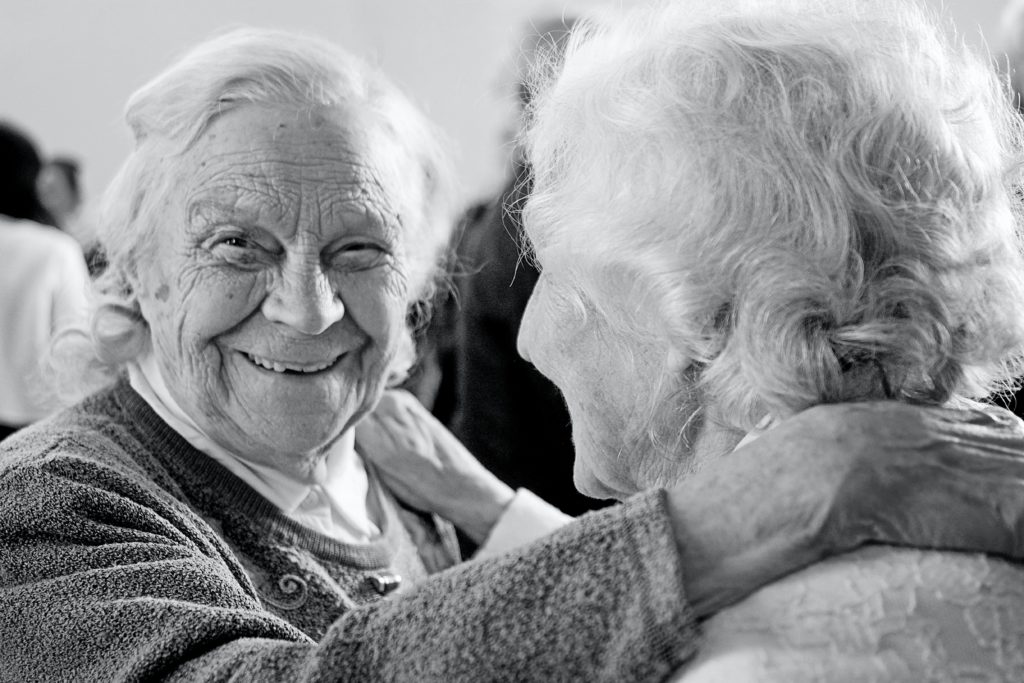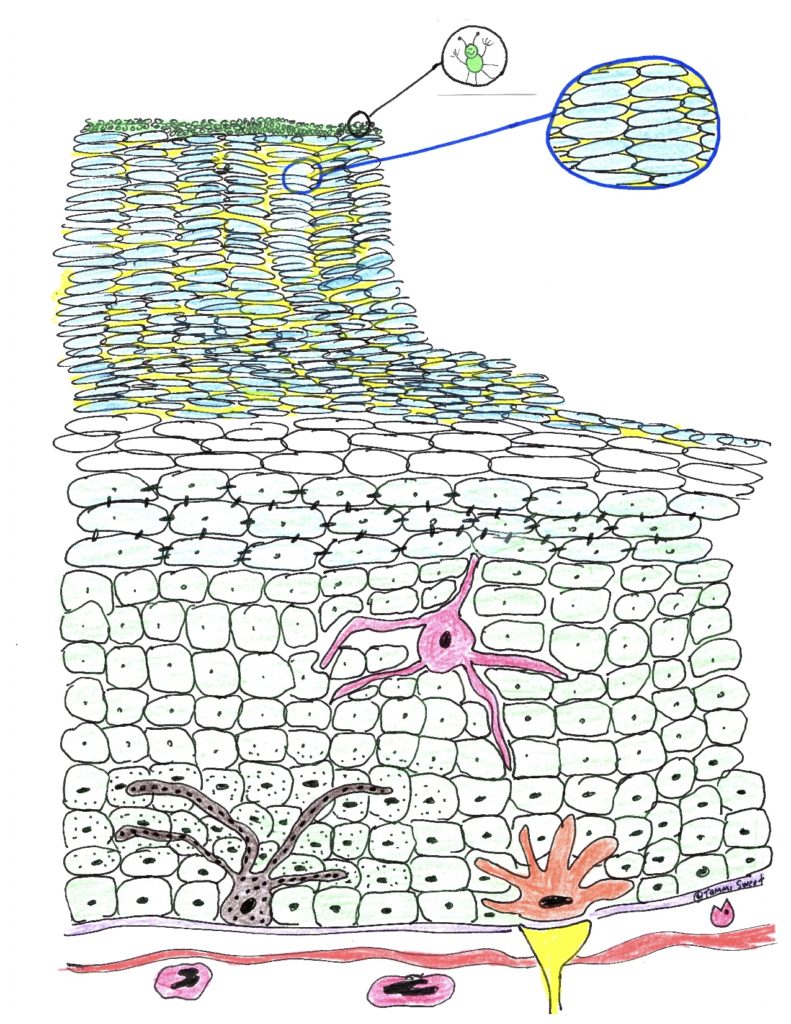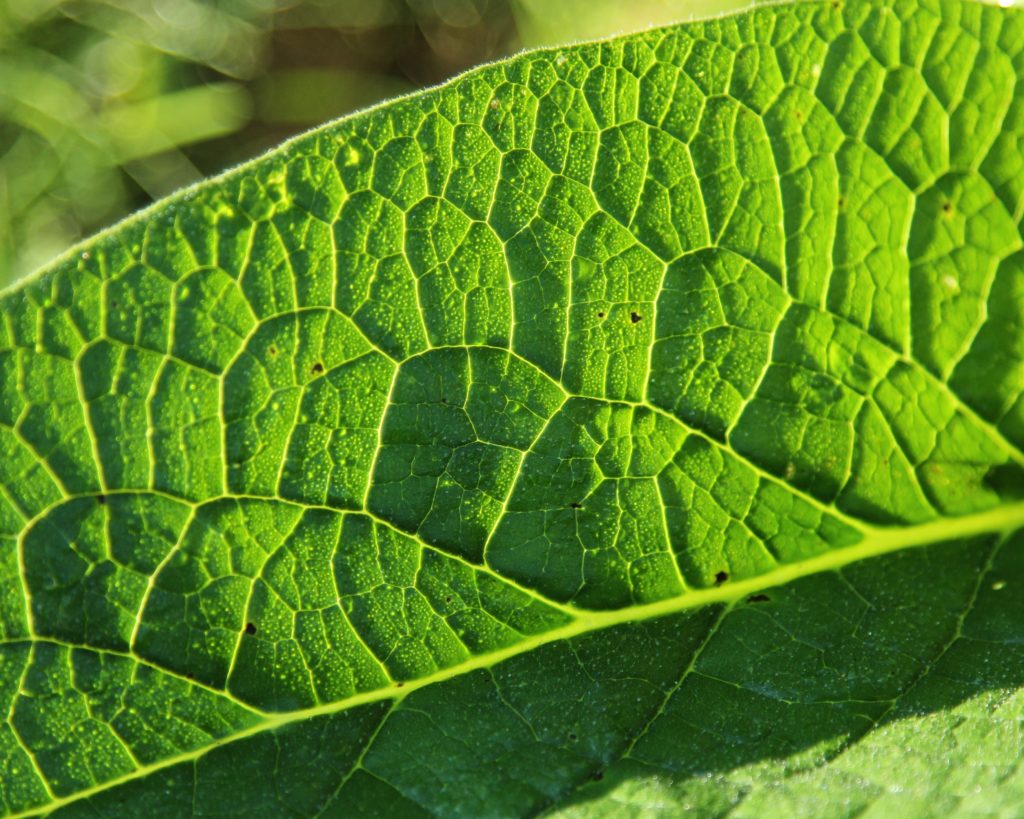Let’s Get Topical

Let’s face it, our largest organ, the skin, receives a lot of negative attention (too saggy, too many wrinkles, and omg, age spots), is constantly abused by us and is also the major interfacer with the external world. It deserves respect. It deserves some understanding regarding the brilliant way it both protects us from the outside world, and allows just a little bit from the outside world in. We’ll spend time here focusing on just one of its many functions; absorption, how things get into the body and ways to increase absorption.
One of the primary ways we want medicines to get into the body is through the skin. We rub creams, oils and lotions on hoping to get relief from pain & inflammation (and possibly wrinkles). Do all herbs work topically? No. If everything was absorbed through our skin we would be unable to regulate our highly specific internal environment. Big trouble. Thankfully, there are “rules” for what gets in. Be grateful for this the next time you pump your gas. You are not absorbing the carcinogen straight into your body.
Let’s get to some rules.
Rules for absorption
1. Size Matters
Molecules need to be small enough for absorption through the 50-60 layers of skin cells. For you brainy smurfs that’s a molecular weight of 100-800 (CBD, THC and constituents in some of our other favorite topical herbs such as arnica, comfrey and plantain all come in at or below 500)
2. Hydration! Hydration! Hydration!
The more hydrated the skin, the better the absorption.
3. Temperature
Yes, you probably guessed right, the warmer the skin, the better the absorption.
4. Temperature
More blood flow to the skin increases absorption rates.
5. Lipid Solubility
The absorption of the herb is dependent on whether it is fat soluble or not. Usually your herb is “carried” in an oil to the skin. The oil is fat soluble. The common herbs you use to make topical oils are fat soluble.
6. Site of Application
Where you apply the medicine matters. Some areas of the skin have more layers, more or less hair & glands, which affects absorption. Thinner skin, more glands & hair equals greater absorption. Your palms and soles are very thick skinned compared to your inner arms.
7. Integrity of Skin
Since the skin’s job is to protect us, when it is intact it prevents absorption better than when it’s damaged. Damaged skin (wounded), allows more things in.

Where Do My Herbal Constituents Go Once In?
This is a great question. For almost all of your topical herbal applications we expect the constituents to stay localized to the area they are applied and affect change right there. The constituents do not go body-wide when you apply them topically. Otherwise you could rub some high THC oil on your skin and weeeeee go for a fun ride.
How do we get herbal medicine to go body-wide?
We take them in through the digestive system where they are absorbed into the blood. Then the blood takes them around the body to all of your cells.

You already apply this principle when you rub your birch infused oil into your sore knee to relieve pain. The methyl salicylates (root beer barrel smelling chemicals) in the birch oil get absorbed at the skin around your knee, travel to the nociceptors present there and decrease Substance-P release, which ultimately decreases the nerve signals carrying pain information and your perception of pain. Your knee hurts less.
Tying It All Together
The easiest way to increase absorption into the body is to be mindful of the seven rules for absorption above. You already know a great method to increase absorption that clicks off three of the factors (temperature, hydration & blood flow). Take a bath with your herbs. It’s wet, warm and increases blood flow. And it’s fun.
Other adaptations would be to apply the herbal oil to the skin and then make a warm compress to go over it to help absorption.
Get creative.
Have fun.
If you enjoyed this blog, and want to understand how to make an infused oil, check out this article.

